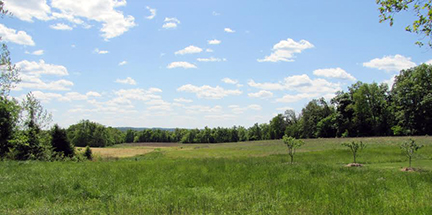What Are Ecosystem Services?
Posted on April 1, 2018, by Joy Jensen SL

Photo by Joy Jensen
We have read about ecosystems. But what are ecosystem services? The notion was popularized by the Millennium Ecosystem Assessment report in 2005, and it is often used in forest management and planning.
Ecosystem services imply those benefits that come from the functioning of ecosystems. These services are generally divided into three categories: provisioning services such as those provided by forests and their habitats; supporting services necessary for producing other ecosystem services such as how forests provide conditions for soil formation and nutrient and water cycling; and cultural and non-material benefits that forests provide such as spiritual enrichment and sites for recreation.
Forests supply a full array of goods and services that are vital to human health and livelihood. These natural assets are ecosystem services.
Forests provide clean air, saving one life per year because of the carbon particulates they remove from the air. They provide natural filtration and storage systems that process nearly two-thirds of the water supply in the United States.
The forests store carbon by trapping the carbon dioxide from burning fossil fuels. A tree can absorb as much as 48 pounds of carbon per year. One tree can sequester one ton of carbon by the time it reaches 40 years old. Further, an average-sized tree produces enough oxygen in one year to keep a family of four breathing.
Wildlife also use trees for food, shelter, nesting and mating. Trees support an incredible variety of biodiversity. Trees help save the environment and help defer climate change by producing oxygen and sequestering carbon.
Three ecological benefits provided by forests are supporting energy flow, reducing soil erosion and absorbing and releasing water. These benefits are the ecosystem services that forests supply.
Our Loretto Motherhouse forests are beautiful and mysterious any time of year. They stand as silent sentinels that provide shelter and food for wildlife such as birds, squirrels and insects. Our groves of trees provide food and cover for larger animals such as deer and raccoons.
It is our responsibility to manage well our forests for their benefits and for the interrelatedness of creation these ecosystem services represent.
